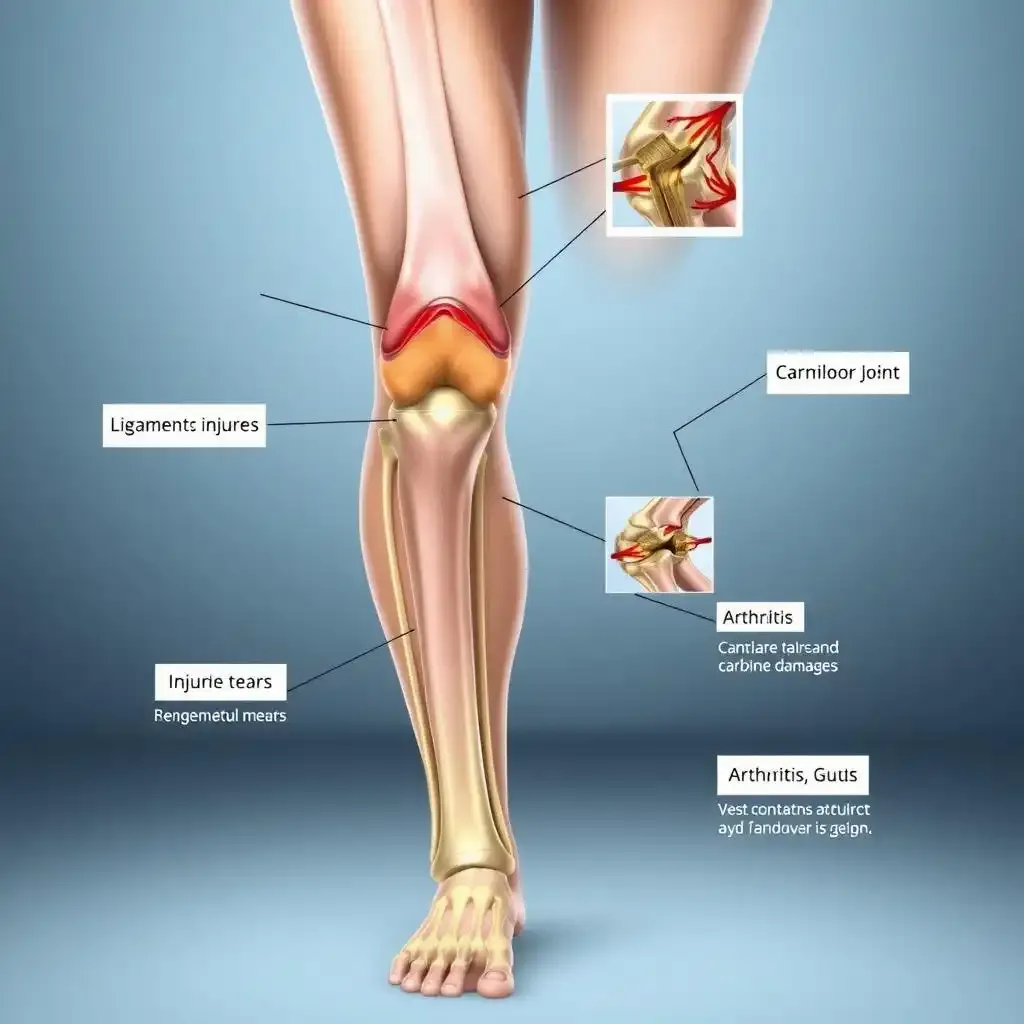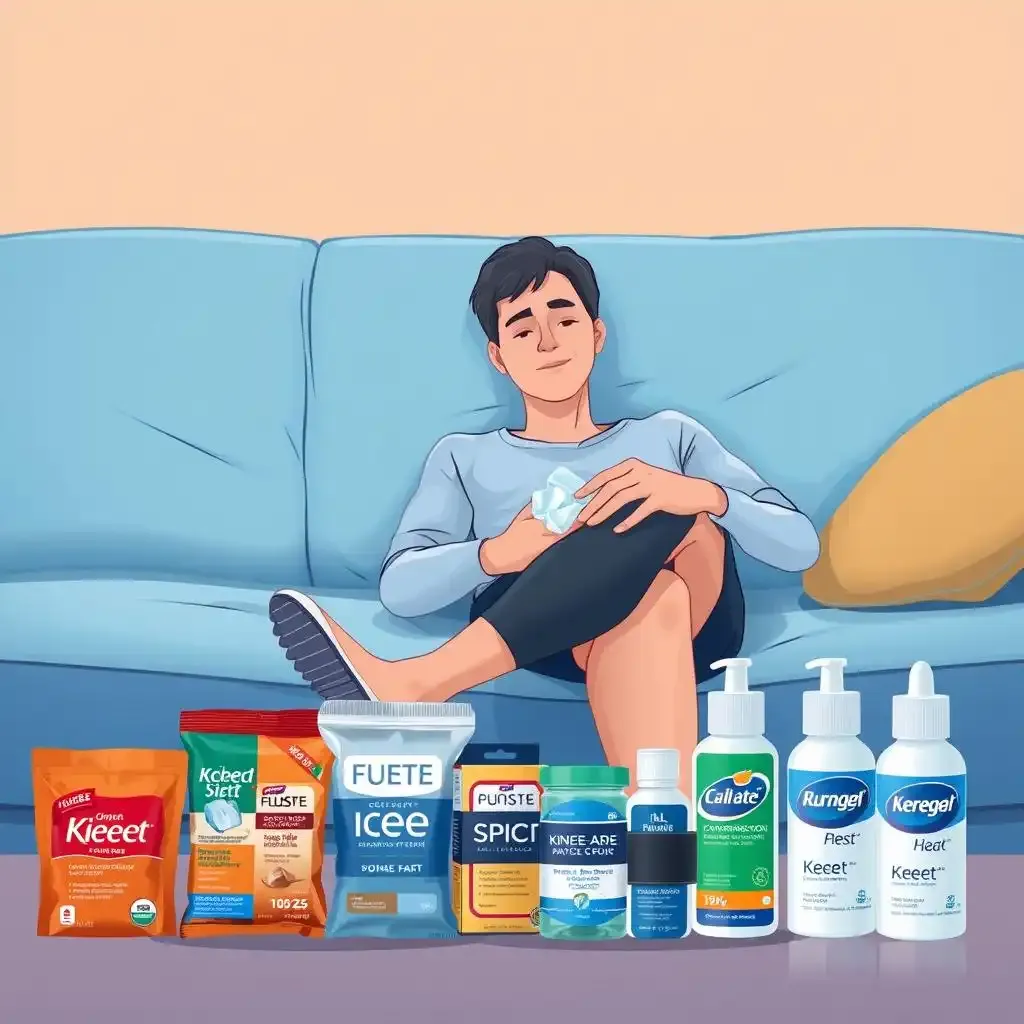Table of Contents
knee discomfort – that nagging ache, that sudden sharp pain, that unsettling instability – it's a problem many of us face at some point in our lives. From weekend warriors to seasoned athletes, from teenagers to grandparents, knee problems are surprisingly common. But understanding *why* your knee hurts is the first step to finding relief. At kizworld, we're dedicated to providing clear, easy-to-understand information about health concerns, and knee discomfort is no exception. This article will explore the diverse causes of knee discomfort, help you identify specific symptoms, and offer practical strategies for managing and even preventing this frustrating issue. So, let's explore in and get you on the path to a healthier, happier knee!
Cause of Knee Discomfort | Symptoms | Treatment Options |
|---|---|---|
Injury (ligament tear, cartilage damage) | Sharp pain, swelling, instability, limited range of motion | RICE therapy, NSAIDs, physical therapy, surgery (in severe cases) |
Arthritis (osteoarthritis, rheumatoid arthritis) | Stiffness, pain, swelling, limited range of motion, creaking or grinding | Pain relievers, physical therapy, joint injections, surgery (joint replacement) |
Gout | Severe pain, swelling, redness, warmth in the joint | Medication to lower uric acid levels, pain relievers, ice |
Overuse | Aching pain, stiffness, swelling | Rest, ice, stretching, strengthening exercises |
Obesity | Increased stress on the knee joint, leading to pain and other problems | Weight loss, exercise, physical therapy |
Understanding Knee Discomfort: Causes and Risk Factors
Understanding Knee Discomfort Causes And Risk Factors
Hey there, fellow writer! Knee discomfort – it's a real pain, literally! Think of your knee like a super-complex machine, a marvel of engineering with lots of moving parts. When something goes wrong in this amazing machine, you feel it. And boy, do you feel it! One of the biggest culprits is injury. A twisted knee, a hard fall, or even a sudden awkward movement can damage ligaments (think of them as strong ropes holding everything together) or cartilage (that squishy stuff that acts like a cushion between bones). Imagine trying to run a race with one shoelace untied – things get wobbly and painful, right? That's similar to what happens when your knee's support system is damaged. And it's not just about major accidents; even minor, repetitive stress like running too much can cause problems.
Cause | What Happens | Example |
|---|---|---|
Injury (e.g., ligament tear) | Tears in the strong tissues connecting bones | Twisting your knee playing soccer |
Arthritis | Cartilage wears down, causing pain and stiffness | Grandma's creaky knees after years of gardening |
Overuse | Repetitive stress damages knee structures | Running a marathon without proper training |
Then there's arthritis, which is like having tiny sandpaper particles grinding away at your cartilage over time. It's a common problem, especially as we get older. Imagine your knee joint as a beautiful, smooth clockwork mechanism. Arthritis is like someone sprinkling tiny bits of grit into those delicate gears – it's gonna make a lot of noise and eventually stop working correctly. Being overweight is another common risk factor. Carrying extra pounds puts extra stress on your knees, kind of like overloading a tiny wagon. It's not designed for that much weight, and things are going to break eventually. Other issues like gout (a type of arthritis caused by a buildup of uric acid) and infections can also cause knee pain.
- Injury (sprains, fractures)
- Arthritis (osteoarthritis, rheumatoid arthritis)
- Gout
- Infections
- Overuse injuries
- Obesity
“Your knees are the unsung heroes of your body, carrying you through life’s adventures. Treat them with respect!” – Dr. Awesome Knees (totally made that up, but it sounds good, right?)
Common Knee Discomfort Symptoms and When to Seek Help
Recognizing the Warning Signs
Okay, so your knee's acting up. But how do you know it's something serious, and not just a minor twinge? Think of your knee as a grumpy old friend – sometimes it just needs a little rest, but other times it's screaming for help! The most obvious sign is pain, of course. But it's not just *any* pain; we're talking about pain that's persistent, meaning it hangs around for more than a few days, or pain that's intense enough to really disrupt your day. Maybe you can't bend your knee properly, or it feels like it's going to give way at any moment. This isn't just a little ache; it's a full-blown drama unfolding in your knee joint. Imagine trying to walk on a wobbly table leg – that's what it might feel like.
- Persistent pain (lasting more than a few days)
- Swelling or inflammation
- Stiffness or limited range of motion
- Instability or "giving way" of the knee
- Locking or catching in the knee
Beyond the Pain: Other Symptoms to Watch For
Pain isn't the only storyteller here. Swelling is another big clue – think of it as your knee's way of saying, "Hey! Something's not right!" This swelling might be accompanied by redness and warmth, which are both signs of inflammation. If you notice your knee is significantly larger or hotter than your other knee, it's time to pay attention. Also, watch out for stiffness. Can you bend your knee fully? Can you straighten it completely? If the answer is no, that's another red flag. And finally, there's the "giving way" sensation – that feeling that your knee might buckle unexpectedly. It's like your knee is staging a silent protest, and it’s not going to be quiet about it. If you experience any of these things, listen to your body.
Symptom | Description | What it might mean |
|---|---|---|
Swelling | Increased size and firmness around the knee | Inflammation, injury, arthritis |
Redness | Skin around the knee looks flushed | Infection, inflammation |
Warmth | Knee feels hotter than the other knee | Infection, inflammation |
When to Call in the Experts
Sometimes, you need to call in the big guns. While many minor knee issues can be managed at home with rest and ice, there are times when you should definitely see a doctor. If the pain is severe, unbearable, or accompanied by other symptoms like fever or skin changes, don't delay! A doctor can help diagnose the problem and create a customized treatment plan. Also, if your knee is unstable or keeps "giving way," that needs professional attention. Don't risk further damage by ignoring it. Think of it like this: Would you try to fix a broken bicycle yourself if you had no idea what you were doing? Probably not! Your knees are important; treat them with the respect they deserve.
Effective Knee Discomfort Treatment and Prevention Strategies
Effective Knee Discomfort Treatment And Prevention Strategies
Easing the Ache: Treatment Options for Knee Discomfort
So, your knee's grumbling. First things first: don't panic! Many knee problems are manageable. Think of your knee like a grumpy friend – sometimes it just needs a little TLC (tender loving care!). Rest is key. Give your knee a break from activities that aggravate the pain. Imagine your knee is a tired marathon runner; it needs time to recover. Ice is your new best friend. Applying ice packs for 15-20 minutes at a time, several times a day, can help reduce swelling and pain. It's like giving your knee a cool, refreshing drink after a long run. Over-the-counter pain relievers, like ibuprofen or naproxen, can also help manage pain and inflammation. They're like little helpers that ease the discomfort. Gentle stretching and strengthening exercises can improve flexibility and support your knee joint. Think of these exercises as building tiny, supportive muscles that help keep your knee strong and stable. And finally, if the pain's persistent, or if you've got something seriously wrong, see a doctor. They're the real experts, and they'll help you get back on your feet.
Treatment | How it helps | Example |
|---|---|---|
Rest | Allows the knee to heal | Taking a break from running |
Ice | Reduces swelling and pain | Applying an ice pack for 20 minutes |
Pain relievers | Manages pain and inflammation | Taking ibuprofen |
Physical therapy | Strengthens muscles and improves flexibility | Working with a physical therapist on exercises |
Preventing Problems: A Proactive Approach to Knee Health
Prevention is always better than cure, right? Think of it like this: Would you rather constantly fight fires, or prevent them from starting in the first place? For your knees, that means taking care of them! Maintaining a healthy weight is crucial. Extra pounds put extra stress on your knees, like overloading a tiny wagon. Regular exercise, especially activities that strengthen your leg muscles, is super important. Think of strong leg muscles as bodyguards for your knees, protecting them from harm. They're like a shield against injury. Wear supportive shoes – your feet are the foundation of your body, and good shoes protect your knees. Avoid activities that put excessive stress on your knees, especially if you're already experiencing discomfort. Listen to your body; it's trying to tell you something. And finally, stretch regularly! Stretching keeps your muscles flexible and prevents stiffness and injury. It's like oiling the gears of a machine to keep it running smoothly.
- Maintain a healthy weight
- Strengthen leg muscles
- Wear supportive shoes
- Avoid high-impact activities
- Stretch regularly
"Take care of your knees, and they'll take care of you!" - My wise grandma (who, incidentally, still hikes mountains at 75).
Final Thought
Dealing with knee discomfort can be frustrating, but remember you're not alone. By understanding the potential causes, recognizing your specific symptoms, and taking proactive steps towards treatment and prevention, you can significantly improve your quality of life. Remember, early intervention often makes a big difference. If your knee discomfort persists or worsens, don't hesitate to consult a healthcare professional for personalized advice and treatment. Your trip to a pain-free knee starts with knowledge and action.